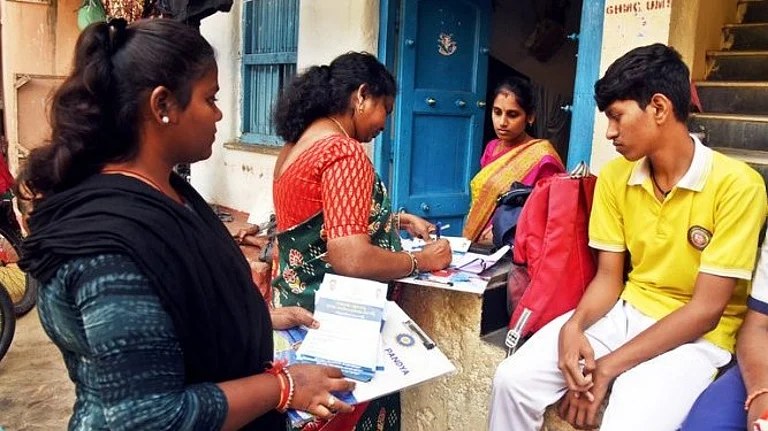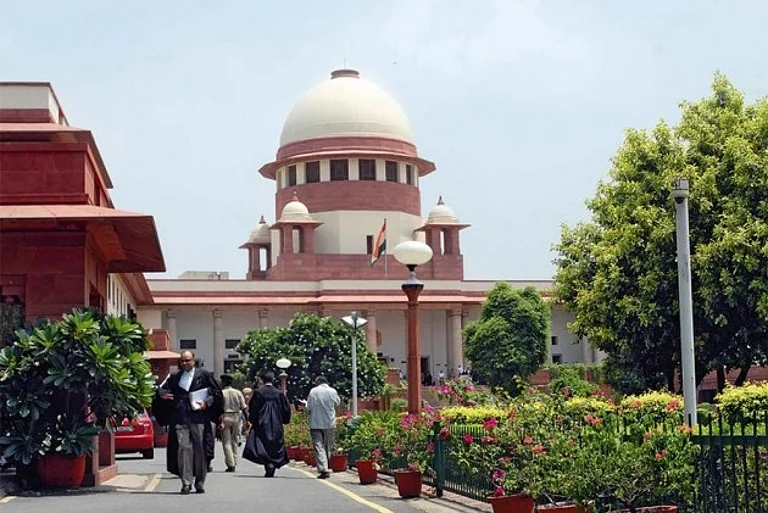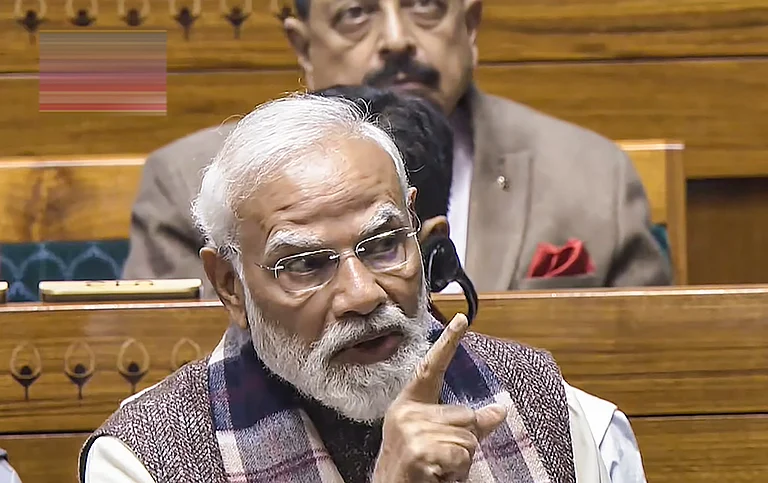India's mega Lok Sabha elections 2024 have commenced April 19 with the first of the seven phases of voting taking place to elect the 543 members of the 18th Lok Sabha and decide whether the Narendra Modi-led NDA government will come to power at the Centre for a consecutive third term or if the Opposition, which has united under a bloc called 'INDIA', will remove the Bharatiya Janata Party (BJP)-led dispensation from the central government position. Lok Sabha Elections 2024 Phase 2 Voting LIVE Updates
The Lok Sabha elections are taking place in seven phases. While voting for the first phase took place on April 19, the last phase will take place on June 1, with the counting of votes scheduled for June 4.
The general elections are taking place with the BJP riding on what it calls the success of the Narendra Modi-led central government it attributes to the milestones such as Ram Mandir opening, Citizenship Amendment Act (CAA) rollout, G20 Summit, sending India to the Moon via Chandrayaan 3 among other big events, some of which have been criticised by the Opposition and a section of people in the country. Click Here For Outlook India's Election Coverage
The election to the lower house -- Lok Sabha -- is taking place amid opposition's claim of not getting a "level playing field," with many leaders arrested, and raided by central law agencies, mostly under the stringent Money Laundering Act (PMLA). While Congress, BJP's immediate rival, said tax authorities have frozen its bank accounts, hitting its campaign, some key opposition leaders, including popular Delhi Chief Minister Arvind Kejriwal, have been jailed on corruption charges they have denied.
As India heads out to vote in the first phase of Lok Sabha elections 2024, here's all you need to know about the 'largest democratic exercise ever':
Lok Sabha 2024 Elections | Important Dates
The schedule for Lok Sabha elections 2024 was announced by the Election Commission of India (ECI) on March 16. The voting for Lok Sabha elections 2024 is taking place in seven phases, starting April 19 and the counting of votes will take place on June 4.
While voting for Phase 1 took place on April 19, polling for Phase 2 to Phase 7 will take place on: April 26, May 7, May 13, May 20, May 25, and June 1.
How Many Lok Sabha Constituencies
The entire country has been divided into 543 Parliamentary Constituencies, each one of which elects one member. The members of the Lok Sabha are elected directly by the eligible voters during the Lok Sabha elections which take place every five years. The President of India can nominate a maximum of two members as representatives of the Anglo-Indian community. Some seats are reserved in Lok Sabha for the members of the Schedule Castes and Scheduled Tribes.
As per the order issued by the Delimitation Commission in 2008, 412 are general, 84 seats are reserved for Scheduled Castes and 47 seats for the Scheduled Tribes. Earlier it was 79 and 41 for Scheduled Castes and Scheduled Tribes respectively.
Uttar Pradesh sends 80 parliamentarians, the highest, to the Lok Sabha.

Polling Date And Constituencies In Each Phase
A total of 102 constituencies from 21 states/UTs will vote in Phase 1, while 89 constituencies from 13 states/UTs will vote in the second phase. The third phase includes 94 constituencies from 12 states/UTs, 96 constituencies from 10 states/UTs will vote in the fourth phase, 49 constituencies from eight states/UTs in fifth, 57 constituencies from seven states/UTs in the sixth and 57 constituencies from eight states/UTs will vote in the last phase on June 1.
Phase/Date - Number of States/UTs - Number of seats
1/April 19 - 21 states/UTs - 102 constituencies
2/April 26 - 13 states/UTs - 89 constituencies
3/May 7 - 12 states/UTs - 12 constituencies
4/May 13 - 10 states/UTs - 96 constituencies
5/May 20 - 8 states/UTs - 49 constituencies
6/May 25 - 7 states/UTs - 57 constituencies
7/June 1 - 8 states/UTs - 57 constituencies
Who Can Vote And How To Vote
Those who have turned 18 are eligible to vote in elections. An eligible person can enroll themselves as voters and subsequently get their Voter IDs by following the procedure mentioned on https://voters.eci.gov.in/.
One can vote only if their name appears in the Voter List (also known as Electoral Roll).
General Voters need to fill Form 6. This is only for the Registration of new voters.
Overseas Voter need to fill form 6A.
For Deletion or Objection in electoral roll fill form 7
Form 8 needs to be filled for shifting of Residence/Correction of Entries in Existing Electoral Roll/Replacement of EPIC Marking of PwD.
All the forms are available on https://voters.eci.gov.in/ after logging in.
How Many Voters
According to the ECI, the total electorate in the country as per finally published Electoral rolls with reference to January 1, 2024, as the qualifying date is 968.8 million compared to 896 million in 2019, marking an increase of more than 72.8 million electors.
Over 18.4 million electors are in 18-19 years age group in India. Electors in the age group of 18-19 years constitute 1.89 per cent of total voters, as per ECI data.
ALSO READ | Transcending Barriers: Transgender Community Awaits Inclusion In Politics And Employment
The number of electors enrolled as "Third Gender" (written as TG) is 48,044. Parliament amended the Representation of the People Act, 1950, allowing the enrollment of Indian citizens living overseas as electors.
India's Voters | In Numbers
Total voters - 968.8 million
Third Gender - 48,044
PwD Voters (Person With Disability) - 88,35,449
Senior citizens above 85 - 81,87,999
Senior citizens above 100 - 2,18,442
Polling Stations
The total number of polling stations countrywide is 10,48,202, with a 1.19 per cent increase in the number of polling stations in the country as compared to 2019.

"The Commission has issued instructions to the Chief Electoral Officers of all States/UTs to ensure that every Polling Station needs to be on the ground floor and, shall have accessible road in good condition leading to the polling station building and is equipped with Assured Minimum Facilities (AMFs) like drinking water, waiting shed, toilet with water facility, adequate arrangements for lighting, ramp of proper gradient for the PwD electors and a standard voting compartment etc. The Commission has directed CEO/DEOs to take efforts to make permanent ramp and permanent infrastructure at every polling station, ECI has said.
What Is EVM, VVPAT
An Electronic Voting Machine (EVM) is an electronic device for recording votes and is used in India for voting in elections. An Electronic Voting Machine consists of two Units – a Control Unit and a Balloting Unit – joined by a five-meter cable. Since 2010, the Election Commission has been phasing in a third unit called the VVPAT or the Voter Verifiable Paper Audit Trail, which allows voters to verify that their votes have been recorded correctly by printing a paper receipt.

In accordance with an order by the Supreme Court of India, April 8, 2019, the Commission has mandated VVPAT slips count of five randomly selected polling stations in each assembly constituency/segment of the parliamentary constituency of the states/UTs by the returning officer, by draw of lot in presence of candidates/their counting agents and ECI observer, for verification of the result obtained from the control unit.
What is NOTA
None of the Above (NOTA) in EVMs is an option for voters who do not wish to cast vote for any candidate. On the Ballot Units (BU), below the name of the last candidate, there is a button for NOTA option which allows voters who do not want to vote for any of the candidates to exercise the option.
Similarly, Postal Ballot Papers also have a NOTA Panel after the name of the last candidate. The symbol for NOTA as given below will be printed against the NOTA Panel.
Main Parties
The main parties contesting in the Lok Sabha elections are, needless to say, the Bharatiya Janata Party (BJP) which leads the National Democratic Alliance (NDA) currently in power at the Centre. Attempting to take on the BJP are several parties, a couple of which have united under a bloc they have named 'INDIA' - The Indian National Developmental Inclusive Alliance. 'INDIA' bloc is a multi-party political alliance of 41 parties, led by India's largest opposition party the Indian National Congress.

The BJP hopes to return to power, banking on its tall leader Narendra Modi - the Prime Minister of the country - who is touted to be behind some major milestones the party has hit being in power at the Centre. Ram Mandir inauguration, Citizenship Amendment Act (CAA) implementation, central schemes like Beti Bachao, Beti Padhao, surgical strikes, Chandrayaan 3 are some major landmarks the BJP expects to fetch votes and hit their 400-par target through. Parallely, the Opposition -- comprising parties like Congress, Aam Aadmi Party (AAP), Samajwadi Party (SP), Trinamool Congress (TMC) etc. - has been trying to take on the BJP with, as per them, a "not-so-level playing field" amid the seizure of bank accounts of the saffron party's top rival Congress and arrests of key leaders.
State Assembly Elections
Apart from Lok Sabha elections, the Election Commission also announced schedule for holding assembly elections of four states - Andhra Pradesh, Arunachal Pradesh, Odisha and Sikkim.
While Andhra Pradesh will go to polls for the assembly election on May 13, Sikkim and Arunachal Pradesh will vote on April 19. Odisha assembly elections will take place in four phases on: May 13, May 20, May 25, and June 1.
The counting of votes for Andhra Pradesh and Odisha assembly elections will take place on June 4, coinciding with that for the Lok Sabha elections, however, votes for the Sikkim and Arunachal Pradesh elections will be counted on June 2.



























